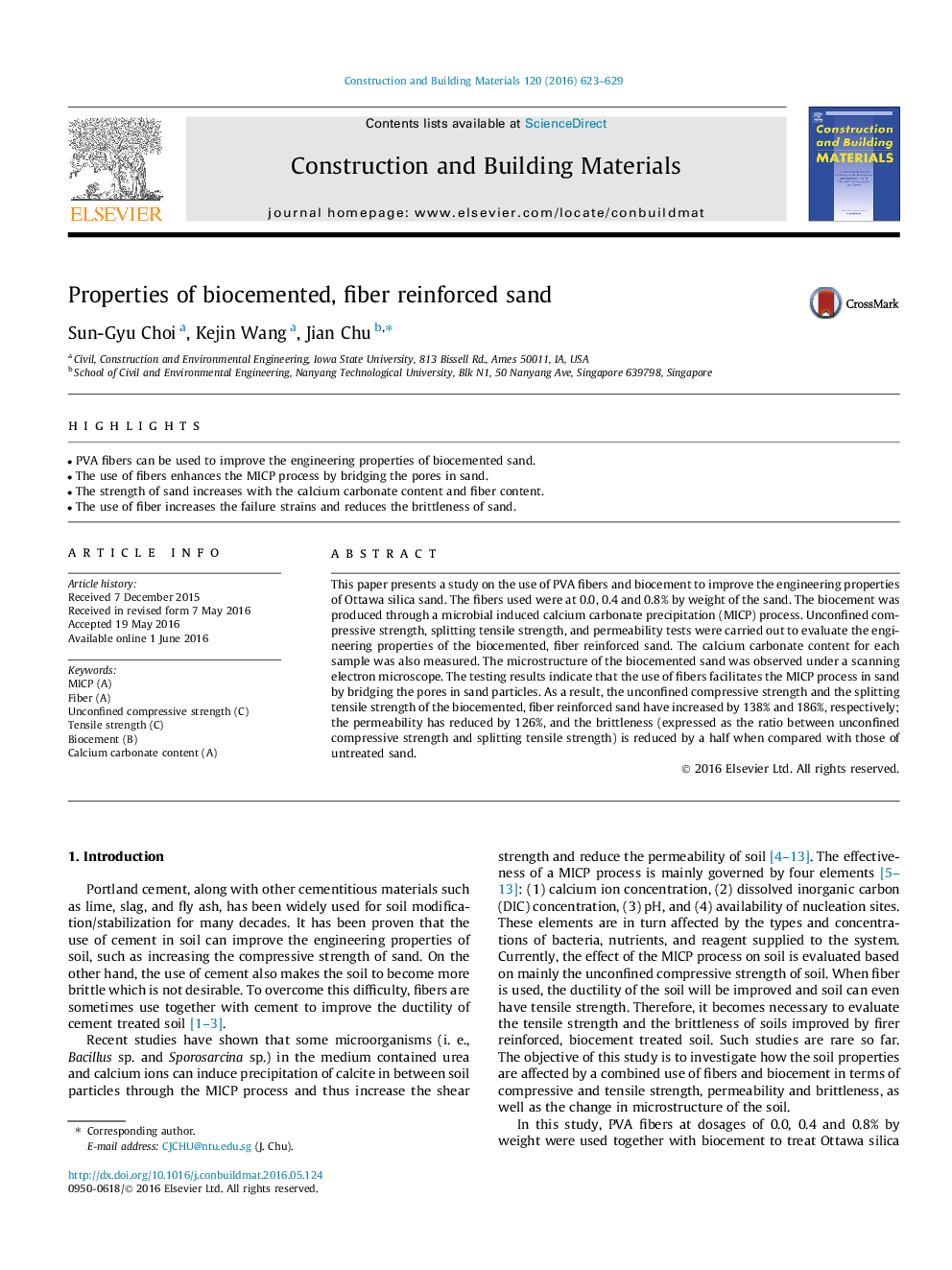| Article ID | Journal | Published Year | Pages | File Type |
|---|---|---|---|---|
| 255869 | Construction and Building Materials | 2016 | 7 Pages |
•PVA fibers can be used to improve the engineering properties of biocemented sand.•The use of fibers enhances the MICP process by bridging the pores in sand.•The strength of sand increases with the calcium carbonate content and fiber content.•The use of fiber increases the failure strains and reduces the brittleness of sand.
This paper presents a study on the use of PVA fibers and biocement to improve the engineering properties of Ottawa silica sand. The fibers used were at 0.0, 0.4 and 0.8% by weight of the sand. The biocement was produced through a microbial induced calcium carbonate precipitation (MICP) process. Unconfined compressive strength, splitting tensile strength, and permeability tests were carried out to evaluate the engineering properties of the biocemented, fiber reinforced sand. The calcium carbonate content for each sample was also measured. The microstructure of the biocemented sand was observed under a scanning electron microscope. The testing results indicate that the use of fibers facilitates the MICP process in sand by bridging the pores in sand particles. As a result, the unconfined compressive strength and the splitting tensile strength of the biocemented, fiber reinforced sand have increased by 138% and 186%, respectively; the permeability has reduced by 126%, and the brittleness (expressed as the ratio between unconfined compressive strength and splitting tensile strength) is reduced by a half when compared with those of untreated sand.
